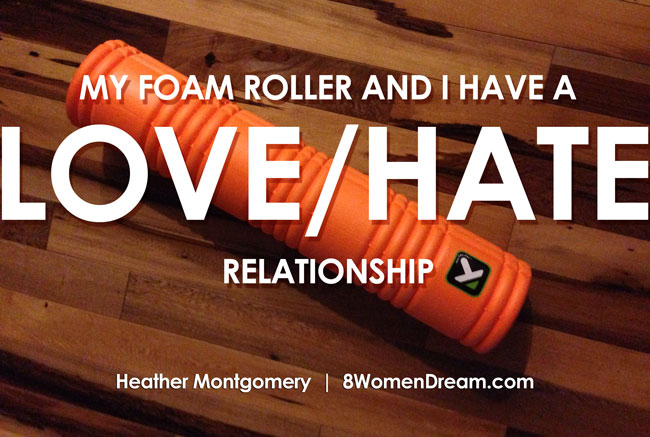Last updated on February 13th, 2023 at 12:55 pm
 As I continue my dream to be a competitive triathlete after age 40+, I’ve discovered just how important active recovery is for my body. Active recovery is a strange concept that most people don’t understand about fitness.
As I continue my dream to be a competitive triathlete after age 40+, I’ve discovered just how important active recovery is for my body. Active recovery is a strange concept that most people don’t understand about fitness.
Active is the days you work out, and recovery are rest days with no workouts, right?
Past fitness information has filled us with the wrong idea that the days we are active and the days we are resting are mutually exclusive.
The truth is that your body may benefit from doing some type of movement every single day. What matters most is the right movements and their intensity on your “resting” days.
For those of us who may not know how to tone down the intensity when we move, this kind of recovery can be a challenge.
Active Recovery is your key to reducing soreness.
Anyone who is stuck at a desk all day understands the benefit of moving to reduce stiffness. The same goes for anyone who has woken up the next day following a tough workout feeling the intense pain of a sore body the moment you move.
A good definition of active recovery would be an easier workout than what you normally do. This is the one you do on your off days, and it really depends on what you do to stay fit. Lower intensity and lower volume make for a good active recovery workout.
Are you a marathon runner? A slow jogging pace or a fast-paced walk probably won’t impact your training days and may help your fitness goals.
If you are just getting your fitness journey started, you may not be able to work out every day, so please consider your own fitness level when thinking about adding active recovery to your off days. Maybe all you do is stretch on your recovery days.
Tip: If you feel better after your active recovery workout, you are doing it right!
There are a few areas of thought on the benefit of active recovery overall. They range from “not useful at all for recovery” to “potentially adding too much work” for your body. For my own training, putting these active recovery workouts into my training plan has allowed me to keep moving when I need to recover from my tougher training days.
Also, on days that I participate in some sort of exercise for my body, I am more aware of the food I eat, so active recovery days help me stay with my healthy eating habits.
6 Active Recovery Workout Ideas
If you aren’t sure what to do on your active recovery days, get moving with these easy ideas. Keep your age and fitness level in mind when working with active recovery. You may need to simply soak in a bath or a pool on your recovery days.
1. Foam Rolling
If you are sore or feeling tight after your heavy workout days, this option is my favorite way to recover. A foam rolling session is a way to give yourself a massage, or Self-Myofacial release (SMR) until you can book time with your massage therapist to really get those knots out. The rule of thumb after foam rolling is that you should feel better afterward, so pay attention to the amount of pressure you are putting on any one muscle group, go slow, and avoid any bony areas.
2. Yoga
Working on increasing your mobility is something you can do every day. It can also be a wonderful way to stretch through any soreness as it works all the joints within a safe range of motion. A great way for those of us who stick to very active, kinetic workouts to find a little Zen on our active recovery days.
3. Walking
This is a classic standard for any active recovery solution. It burns calories, gets you outside breathing fresh air, and kicks in those feel-good chemicals that keep us smiling. Pick a good distance that is in line with your fitness level and keep it to a walk.
4. Lighter Weight Lifting
If lifting is your go-to fitness then cutting the weights down to no more than 30% of your usual weight, and doing the same exercises that made you sore, can help your recovery. The point here is to let your muscles remember and recover, not perform to failure.
5. Swimming
Floating is just about as low-impact as you can get. I love the weightlessness of water, and you still engage muscles and cardio without pounding on your joints. Keep it short and at a slow pace if used for a recovery workout.
6. Cycling
Take the bike out for a spin and keep the intensity low. Your active recovery cycling day is the day to explore those back streets and trails at a nice mellow pace. Leave that hill you have been meaning to conquer for a full workout day instead.
Recover from your activity by moving to ease those sore muscles. More exercise does not equal recovery. Most people assume that more moving will help burn more fat. Consider that whether you choose to use active recovery or take full days off from exercise, the key to staying on track will always coexist with your eating habits.
If you are using active recovery, don’t over-train on those days. That is the quickest way to lose motivation or get tired and risk injury. I’ll see you at the next marathon!
———-
Disclaimer: My goal is to share my experience with weight loss and fitness. I am not a professional trainer, nutritionist, or dietitian and all opinions are my own. This worked for me, but may not work for you, so please research what is best for your health and fitness goals.

Heather Montgomery is a fitness writer, triathlete, and serial entrepreneur who is devoted to sharing what she has learned about becoming a triathlete after age 40. She uses her Metabolic Training Certification to help other women struggling to get fit in mid-life. She lives and trains in Santa Rosa, California, the new home of the Ironman triathlon. You can find her biking the Sonoma County wine trails.
Note: Articles by Heather may contain affiliate links and will be compensated if you make a purchase after clicking on an affiliate link.




